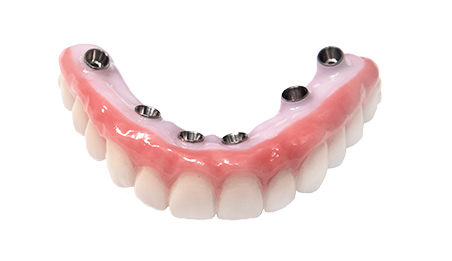Things about Dental Sense
Things about Dental Sense
Blog Article
The Best Strategy To Use For Dental Sense
Table of ContentsThe Definitive Guide to Dental SenseDental Sense for BeginnersThe 3-Minute Rule for Dental SenseGetting The Dental Sense To Work
are medical devices surgically dental implanted right into the jaw to restore a person's ability to eat or their look. They provide support for synthetic (phony) teeth, such as crowns, bridges, or dentures. When a tooth is shed because of injury or disease, an individual can experience issues such as fast bone loss, malfunctioning speech, or modifications to chewing patterns that result in discomfort.Dental implant systems contain an oral implant body and dental implant joint and may additionally include an abutment addiction screw. Same day dental implants. The dental implant body is operatively placed in the jawbone instead of the tooth's origin. The oral implant abutment is normally affixed to the dental implant body by the abutment fixation screw and expands with periodontals right into the mouth to sustain the affixed man-made teeth
(https://dentalsense1.start.page)Framework of The Oral Implant System selecting dental implants, talk to your oral provider concerning the possible benefits and risks, and whether you are a prospect for the procedure. Things to consider: Your total wellness is a vital variable in determining whether you are an excellent prospect for dental implants, how much time it will certainly take to recover, and the length of time the implant might remain in place.
Smoking cigarettes might influence the healing process and reduce the lasting success of the implant. The recovery process for the dental implant body may take several months or longer, during which time you commonly have a momentary joint instead of the tooth. the oral implant procedure: Meticulously comply with the dental hygiene guidelines offered to you by your oral supplier.
The smart Trick of Dental Sense That Nobody is Discussing
Implant failure can lead to the need for one more medical treatment to repair or change the dental implant system. Recovers the ability to chew Brings back aesthetic look Helps keep the jawbone from diminishing because of bone loss Maintains the health of the surrounding bone and periodontals Assists maintain adjacent (nearby) teeth steady Enhances top quality of life Damage to surrounding all-natural teeth during implant positioning Injury to the surrounding cells throughout surgical procedure, such as sinus perforation Injury during surgical procedure (as an example, fracture of surrounding jawbone) Inadequate function, such as seeming like the teeth do not bite together normally A sensation that the tooth is loose or twisting in place resulting from an abutment screw loosening Implant body failure (looseness of the implant body) due to systemic infection, which might be most likely in patients with unchecked diabetes as a result of neighborhood infection in bone and gum tissues sustaining the dental implant body because of postponed recovery, which may be more probable in people who smoke Trouble cleaning the gums around the dental implant, resulting in inadequate dental health Untreated gum illness Post-surgical feeling numb due to nerve impingement or damages Always alert health and wellness care providers and imaging specialists that you have dental implants prior to any kind of magnetic vibration imaging (MRI) or x-ray treatments.
FDA is not mindful of any type of unfavorable events reported for MRI or x-ray procedures with dental implants. Oral implants systems are typically constructed from products that follow global agreement standards of the International Company for Standardization (ISO) or ASTM International. These requirements have information of what makes a risk-free product.

An oral implant is a structure that replaces a missing out on tooth. With screw-like tools, the cosmetic surgeon inserts a dental implant right into the jawbone, and it works as an anchor for a man-made tooth, called a crown. A tool called an abutment connects the synthetic tooth to the oral implant. The crown is custom-made to fit the person's mouth and match the shade of their teeth.
Dental Sense Can Be Fun For Anyone
Some individuals are not qualified for dental implant surgical treatment. It is for oral cosmetic surgeons to operate on people with: severe illnessuncontrollable metabolic diseasebone or soft tissue illness or infectionIf these problems are settled, an individual can have the surgical treatment. In, dental surgeons avoid from operating individuals with: If people with any of the above undergo oral implant surgical treatment, there is a higher threat of the dental implant failing.

Dental dental implant surgical treatment is a personalized procedure. Give you time to recover. Affix the blog post and final crown, bridge or denture.
Next off, your doctor will thoroughly position the oral implant right into your jaw. Your doctor will rearrange your gums and close the cut with stitches. If your dental implant is near the front of your mouth, your dentist will make a short-lived tooth for you to use till you recover. This way, you will not have a space in your smile while you recuperate.
More About Dental Sense
During the healing stage, your jawbone should fuse to the dental implant. This process can take anywhere from three to 9 months.
Once your implant heals, your dental practitioner can connect the abutment (little port post) and your final reconstruction (crown, bridge or denture). This usually takes about one hour to complete and might need a 2nd minor surgical treatment. You should not really feel any pain throughout your dental implant treatment because your provider will certainly use drug to numb your periodontals.
Report this page